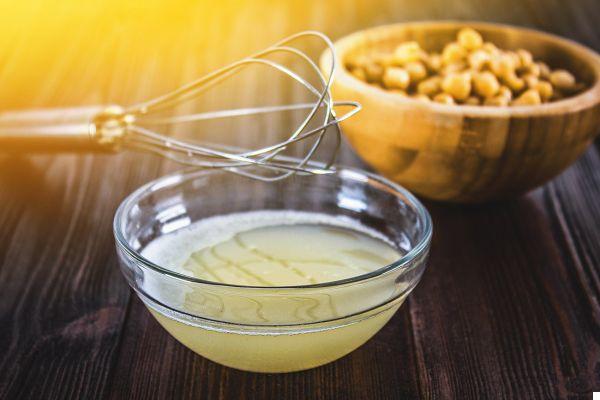
Have you ever heard ofaquafaba? The term, which combines the Latin aqua (water) and faba (beans), was coined by the American engineer Goose Wohlt in 2014 and has risen more and more to the fore over the years. Also thanks to the actress Gwyneth Paltrow, who in her latest best seller The clean plate indicates this ingredient as one of those essential for making healthy dishes.
So let's see what it is.
The chickpea one is the best
«The aquafaba is the water in which the legumes are boiled or the governing liquid of the precooked ones, sold in box, glass or tetra pak. On the other hand, the soaking of dried legumes is excluded ”, explains Dr. Luciana Baroni, nutritionist and president of the Scientific Society of Vegetarian Nutrition.
«Generally it is used the water from chickpeas or white cannellini beans, because they are tasteless. On the other hand, those obtained from other legumes are not recommended, because they have a too marked flavor, which can alter the taste of the dishes ».
A vegetable album
From a nutritional point of view, aquafaba has no particular peculiarities: "Contains minerals and vitamins, but in variable quantities depending on the cooking to which the legume was subjected. Better then that it is not salty and free of preservatives or additives ", explains the expert.
However, to make it appreciated is the presence of proteins, starches and saponins which give it a particular property: «It can be whipped just like egg white and like egg white it has a thickening and binding power», explains the nutritionist.
«It is therefore a valid, completely vegetable, economical alternative (waste is recycled) and also useful in case of egg allergies ». Here on the side, here are two examples of how to use the aquafaba in the kitchen.
Try it like this for sweet or savory
- meringues: whip 100 ml of aquafaba adding 125 g of icing sugar and 1 tablespoon of lemon juice a little at a time. When the mixture is shiny and firm, with the help of a pastry bag create small meringues on a baking sheet. Bake at 100 ° C for about 90 minutes in a convection oven, then let it cool with the door ajar.
- Mayonnaise: blend 100 ml of aquafaba with 1 teaspoon of vinegar (or lemon juice) and 1 teaspoon of mustard for a few seconds. Then, continuing to whip, slowly and slowly add 200 ml of sunflower oil.


























